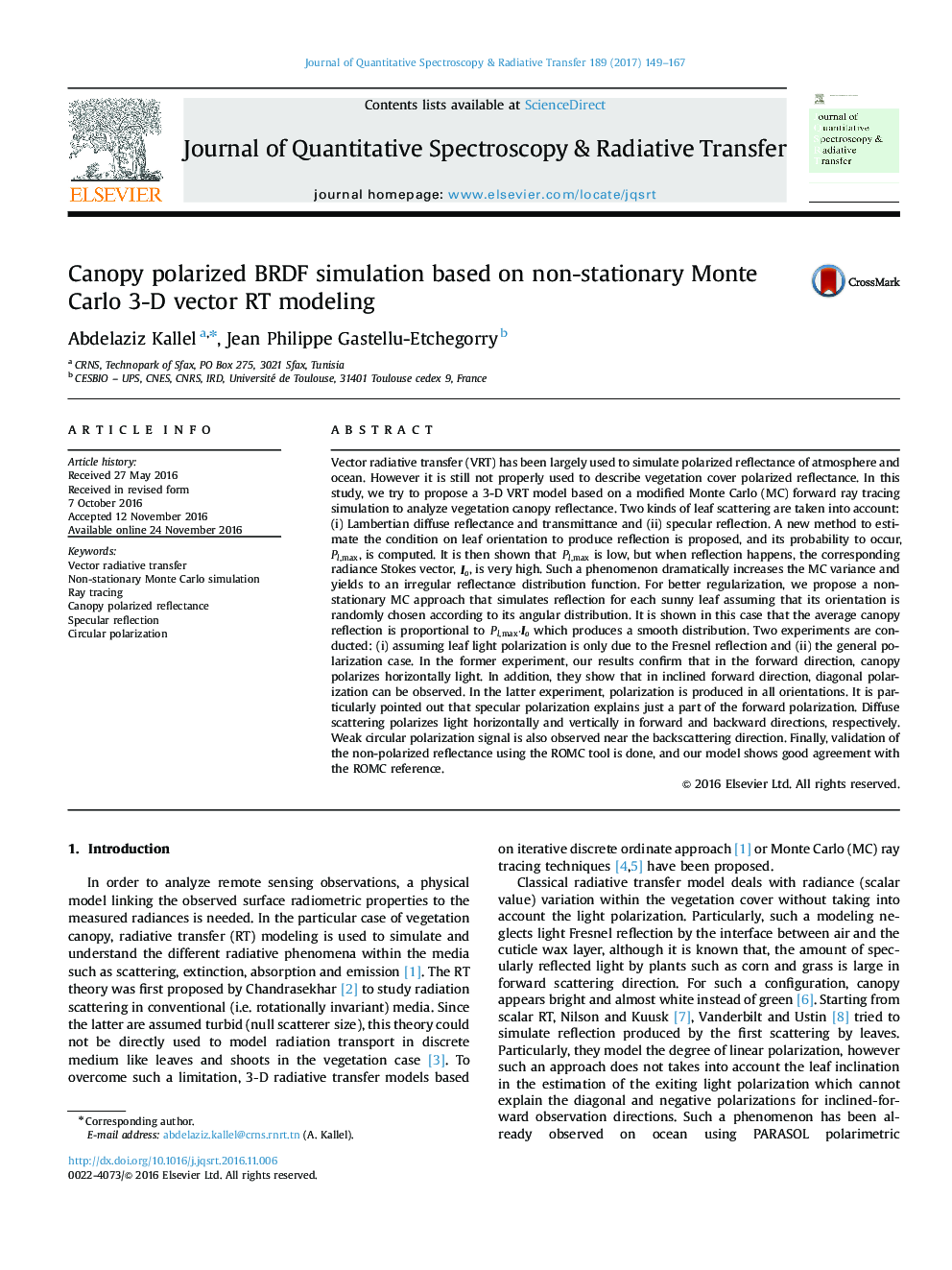| Article ID | Journal | Published Year | Pages | File Type |
|---|---|---|---|---|
| 5427333 | Journal of Quantitative Spectroscopy and Radiative Transfer | 2017 | 19 Pages |
â¢Vector radiative transfer to model vegetation polarized reflectance is proposed.â¢Probability to produce specular reflection is very low but specular reflection radiance is very high.â¢Non-stationary MC estimates average specular reflection which is the product between its probability to occur and its amount.â¢Horizontal and vertical specular polarizations are observed at forward direction and backward direction.â¢Circular polarization signal is very weak to be detected.
Vector radiative transfer (VRT) has been largely used to simulate polarized reflectance of atmosphere and ocean. However it is still not properly used to describe vegetation cover polarized reflectance. In this study, we try to propose a 3-D VRT model based on a modified Monte Carlo (MC) forward ray tracing simulation to analyze vegetation canopy reflectance. Two kinds of leaf scattering are taken into account: (i) Lambertian diffuse reflectance and transmittance and (ii) specular reflection. A new method to estimate the condition on leaf orientation to produce reflection is proposed, and its probability to occur, Pl,max, is computed. It is then shown that Pl,max is low, but when reflection happens, the corresponding radiance Stokes vector, Io, is very high. Such a phenomenon dramatically increases the MC variance and yields to an irregular reflectance distribution function. For better regularization, we propose a non-stationary MC approach that simulates reflection for each sunny leaf assuming that its orientation is randomly chosen according to its angular distribution. It is shown in this case that the average canopy reflection is proportional to Pl,max·Io which produces a smooth distribution. Two experiments are conducted: (i) assuming leaf light polarization is only due to the Fresnel reflection and (ii) the general polarization case. In the former experiment, our results confirm that in the forward direction, canopy polarizes horizontally light. In addition, they show that in inclined forward direction, diagonal polarization can be observed. In the latter experiment, polarization is produced in all orientations. It is particularly pointed out that specular polarization explains just a part of the forward polarization. Diffuse scattering polarizes light horizontally and vertically in forward and backward directions, respectively. Weak circular polarization signal is also observed near the backscattering direction. Finally, validation of the non-polarized reflectance using the ROMC tool is done, and our model shows good agreement with the ROMC reference.
